|
The CyclingTips crew lucked out when they booked an Airbnb while covering the 2016 Tour de France. Their accommodations offered so much more than a place to sleep! Check out thestory, video, and some great pictures from Richard Leon's Airbnb in the village of Viviers. Situated along the Rhone River, Vivers is in the Ardeche region of south-east France. I had the pleasure of spending a little time there on a three-month cycling tour back in the late 80s. Unfortunately, my trip predated Airbnb by a couple decades.
"While covering the 2016 Tour de France, the CyclingTips team was fortunate enough to stay at an AirBNB property in Viviers owned by Richard Leon. With 25 beautiful bikes in his collection and many stories to tell, it was a pleasure to spend some time with this engaging and philosophical long-distance cyclist." There's still time to take advantage of our Presidents' Gray Sale! $20 off all gray panniers. Sale last through tomorrow and there's still a few bags left... don't delay, go gray!
I have a vintage Italian racing bike I picked up many years ago when I lived in California. It’s a 1972 Lygie with full Reynolds 531 and chrome lugs and highlights. Typically, I would have little interest in racing bikes but this one was tall (66cm) and in great shape. It also had the Campy 1010 dropouts with eyelets for fenders, which make it a bit more useful. There aren't many Lygies around in the US and there is not a lot of information on this marque, but there must have been a bike shop in the Los Angeles area that sold them in the 1960s-70s. That seems to be the place in the US where they seem to turn up most. I’ve built up my Lygie a few different ways over the years – fast rider, sport tourer, single speeder – but I never really liked the ride much. It just wasn’t comfortable. Yeah, I know, it wasn’t built to be comfortable, but still I continued a quest to make it so. I did notice a glimmer of hope for this bike when I tried 700x34 tires. But with the combination of the very tall frame and the steep head tube it felt unstable at any speed other than a leisurely coast. It was easy for me to overlook the Lygie. But I hate to see a nice frame go to waste. Especially since it has a longish top tube (61cm). It was my duty to explore all the possibilities with this bicycle before I gave up on it. Of course I’d have to do something to improve the comfort transcend the oversteering and instability. It occurred one hot day this past summer that perhaps the Lygie might make a nice light weight commuting alternative to my standard workaday ride and, hence, a more pleasant, less perspiratory (I checked, it’s a word), summer riding experience. This epiphany came to me whilst riding my standard daily commuter: a 1984 Fuji Sundance. Ostensibly, the Sundance is a mountain bike but it’s a first generation, so it has some unique characteristics for a “mountain bike.” Most notably, it has smaller diameter road bike sized chromoly tubing and it’s lugged. Of course I like to haul stuff, so I added a set of Surly racks. While robust, they add about 5-6lbs in weight to the bike. It’s a mule, fun to ride, and I love it; but with racks, bags, etc. it comes in at 45lbs, so it's not ideal for when riding in a long sleeve shirt and slacks on a 95 degree day. So, I decided that I would do a 650B conversion with super-wide (55cm) Nitto Albatross Bars. I figured that would help with comfort and perhaps stability. And if I still didn’t like the ride, I’d retire the frame or find someone else who could appreciate it. After some quick measurements, I determined that the Mafac Racers that were on the bike would reach the rims just fine. I went ahead and cold-set the rear triangle from 120mm to 130mm to add a few more gears. Fortunately, I had an extra set of 650B wheels sitting around the shop. I decided to go with a 1x7 gears and use an indexed barend shifter that I fashioned from a Shimano barend pod and a 7 speed shifter lever from a clamp-on Sunrace set. This requires a different lever boss and Dremel tool to create space and a pathway for the shifter cable. I went with Panaracer Col De La Vie tires. They’re inexpensive and supple. I added a set of vintage Bluemel Popular fenders in white to keep it classy and classic. To top it off I went with an internally wired lighting system that makes use of a small rechargeable lead-acid battery with a teeny tiny toggle switch under the saddle. I’ve been pretty happy with the result. The bike is stealthy and smooth. With the fatter 650B tires the ride feels like moccasins on a fairway. If I’ve been riding something else and then jump on the Lygie, it takes me a couple of minutes to adjust to the steering. I’ve ridden it often since I built it up. Only its lack of cargo capacity prevents me from riding it more. I think I've finally found the bike it was meant to be... for me, anyway.
If you follow my blog you’ll know I’m a fan of the mixte. Thus, I’m always on the lookout for interesting mixtes. Unfortunately, despite my attention to the mixte I’ve never come across one that would be suitable for my 6’6” frame. I hope to someday get one built with a long enough top tube to fit me. In the meantime, I stay vigilant in my quest for interesting mixtes to rescue and restore.
Well, last December I stumbled upon a 1970s vintage Motobecane mixte on eBay. The combination of uninformed seller and bad photos made it difficult to determine the specific model Motobecane. However, I was pretty confident it was Grand Jubilee. In the 1970s, the Grand Jubilee was a good quality bicycle residing on the north end of the Motobecane lineup. And a Grand Jubilee of the mixte persuasion is a rare find. There was also a chance that it might have been a Grand Touring. The seller wasn’t sure of anything and couldn’t or wouldn’t send more photos, so the purchase was a bit of a crap-shoot. I decided to take a chance and it turned out to be a 1975 Grand Jubilee. The mixte has undergone a resurgence. After being quite popular in the US during the 1970s-80s, it all but disappeared in the 1990s. Granted, the lion’s share of production mixtes of that era were low-end and mid-level. Nicer production mixtes from the 70s and 80s are rare but they are out there and I’m always on the lookout for these better quality bicycles. The 1975 Grand Jubilee mixte came with double-butted Reynolds 531 main tubes, Nervex Professional lugs, and Huret dropouts. The components weren’t too shabby either; Stronglight 49D crankset, Stronglight v4 Competition headset, and Huret Jubilee derailleurs. As was common with Motobecanes of this vintage, the finish was nice and it came with contrasting head and seat tube bands. In addition to my fondness for mixtes, I’m also an admirer of old Motobecanes. My first touring bicycle was a 1978 Grand Touring with a Vitus 172 double butted frame. I made a few changes to the components to make it more touring friendly. I put thousands of loaded touring miles on that bike before cracking the frame in Italy on tour. Motobecane, in a gesture not as common today, shipped me a new and nicer frame. Motobecanes, like most quality bicycles of that era, had a lifetime warranty on the frame. But let’s get back to the Jubilee mixte. So I stripped off the components and bits, cleaned the frame and built it up with some alternative parts. Don’t get me wrong, I love the distinctive Huret Jubilee long cage derailleur – long, beautiful, light. But it seems a bit too frail and temperamental for a rear derailleur. Alas, the clamp on the front Jubilee derailleur had a fractured band, so I replaced the set with a Huret Success. The Stronglight crank was swapped out with a shorter TA Cyclotouriste and the Weinmann brakes for MAFACs . I added a vintage Blackburn rack on rear and a little TA bag support on front so I could try out some Ironweed bags on it. The Orpington front bag worked well. Unfortunately, there was not adequate space in the Stronglight Competition (v4) headset stack to squeeze in the Velo Orange decaleur. I made it work – for just to test the fit – by removing the toothed locking washer. I like this headset, so I’ll have to figure out a different decaleur. Below are the results. I can’t speak to how it rides, and have to rely on the opinions of others. I do think it will make a nice city bike for someone. |
Brian Loring
|



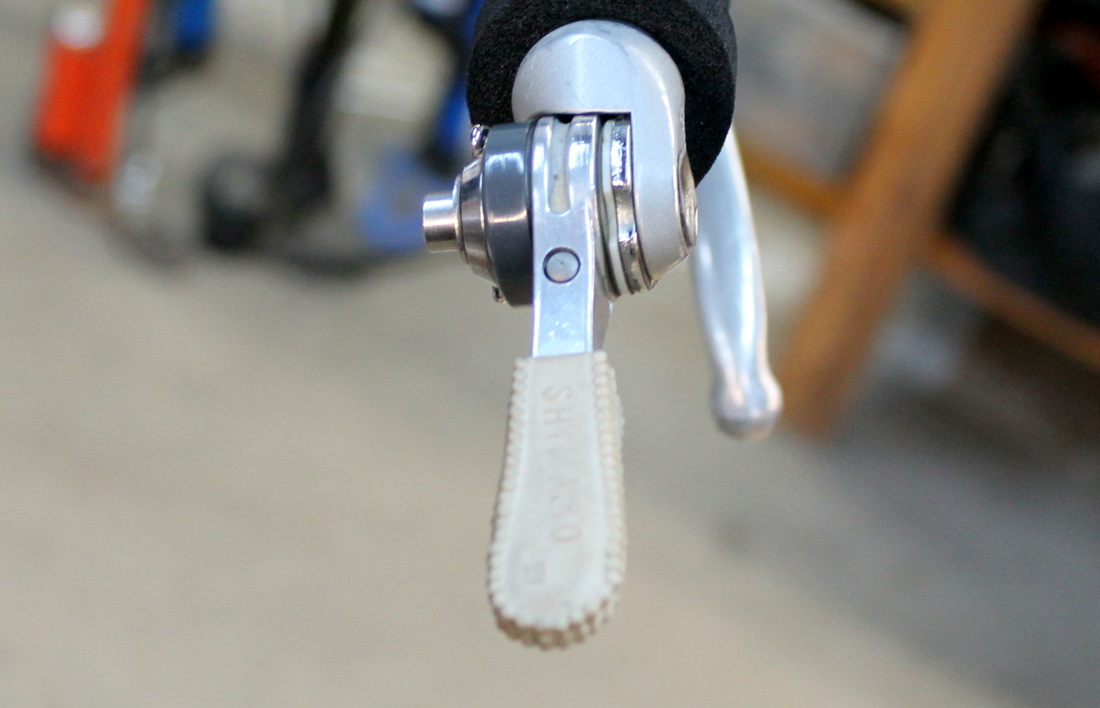
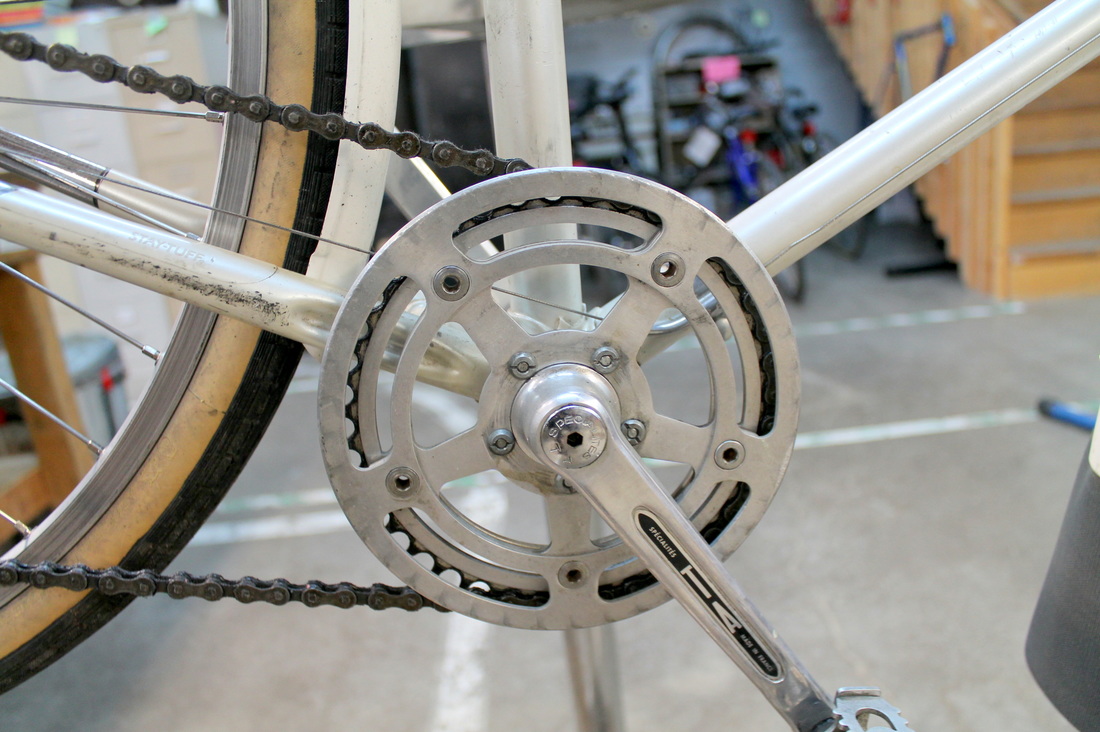
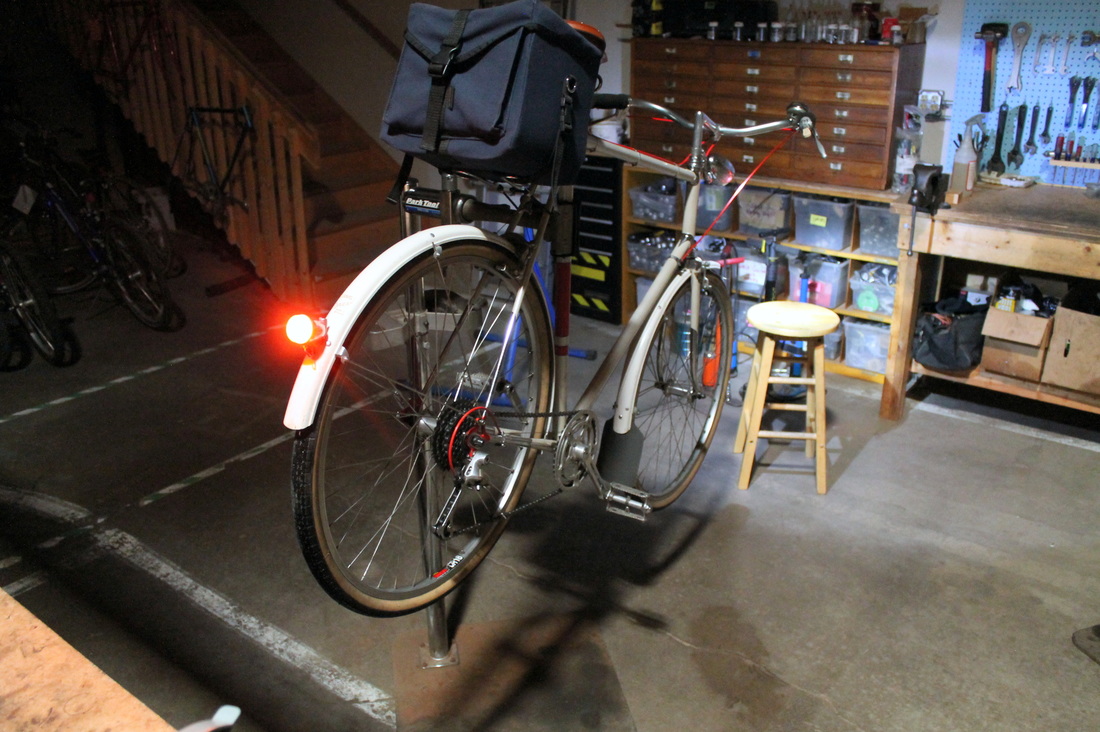


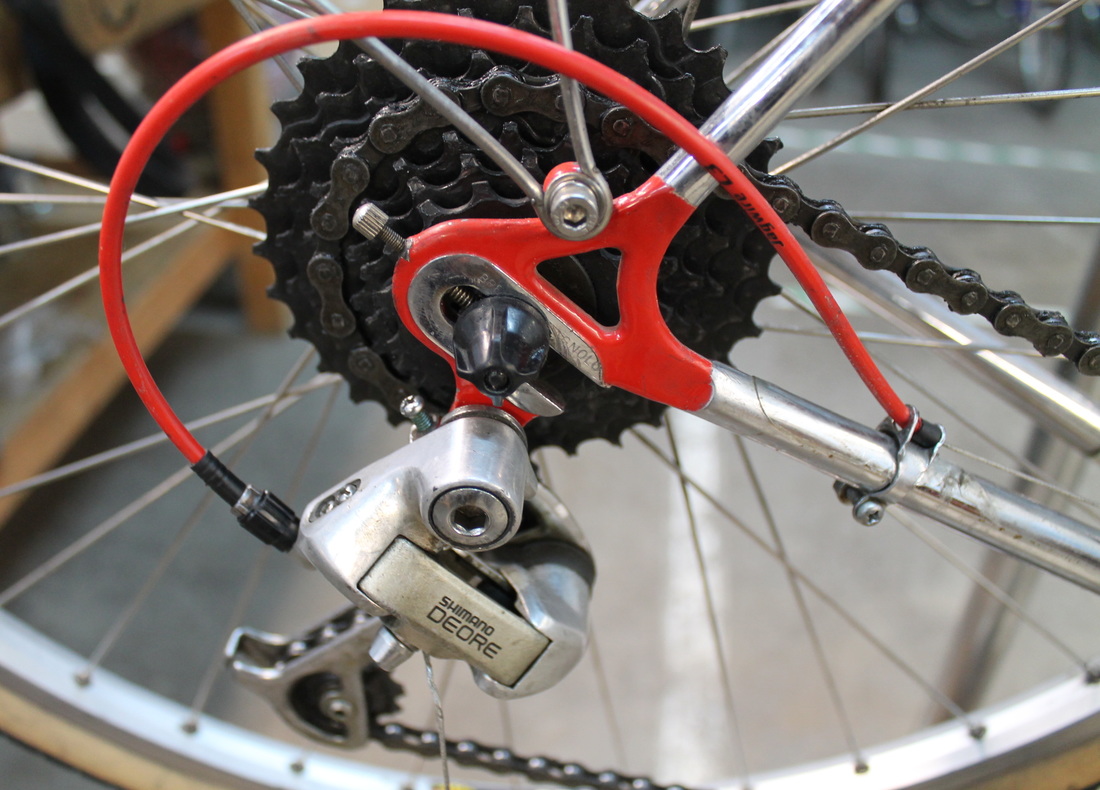





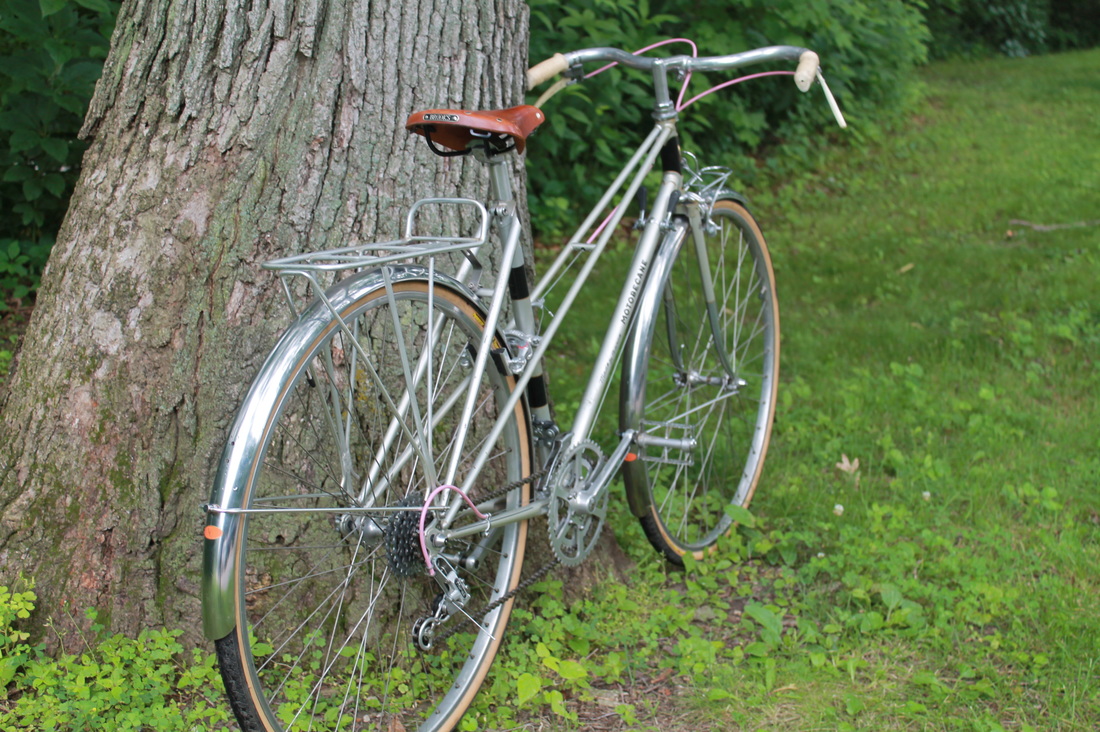
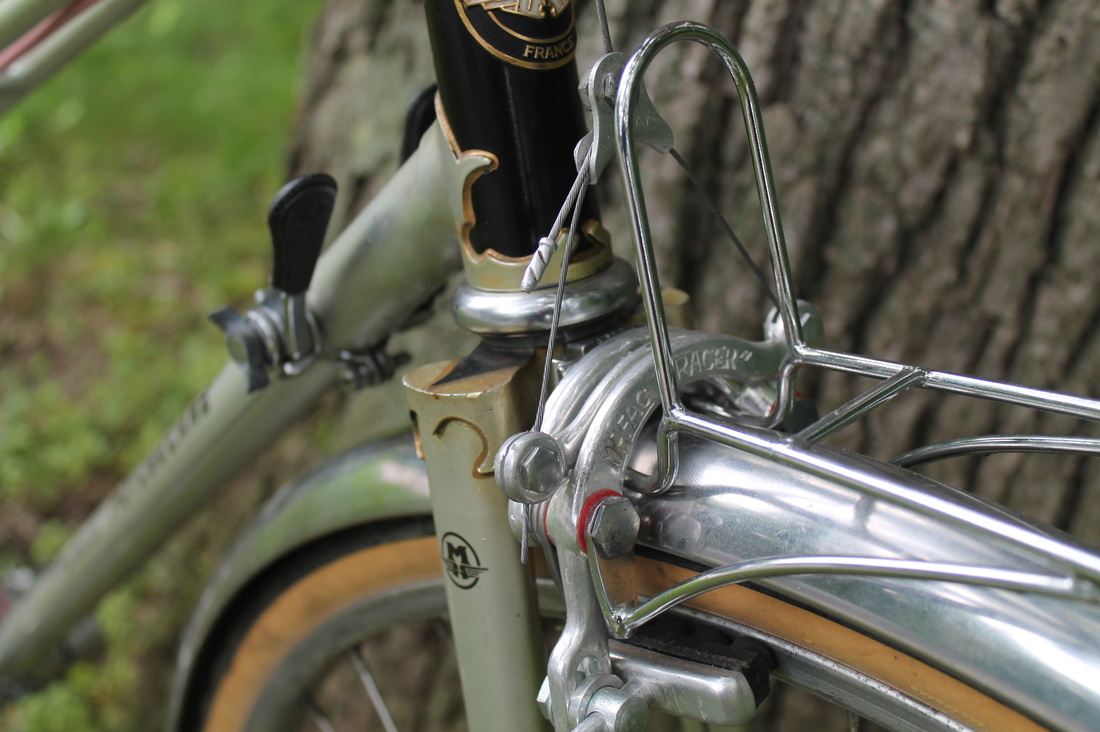



 RSS Feed
RSS Feed
